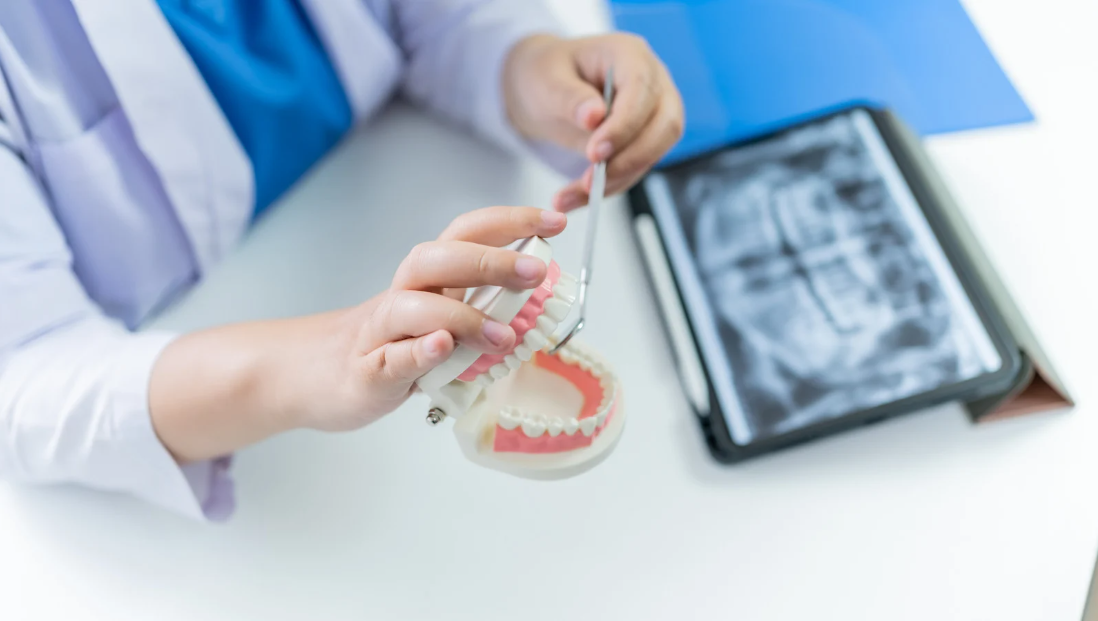What Are Dental Crowns? Purpose, Procedure, and When You Might Need One

When a tooth is cracked, weakened, or heavily restored, preserving it becomes a priority. That’s where dental crowns come in. But if you’ve never had one, you may be wondering: what is a crown for teeth, and why is it often recommended?
Dental crowns are among the most trusted and widely used treatments in modern dentistry. They serve both restorative and cosmetic purposes protecting compromised teeth while restoring their strength, appearance, and functionality.
In this article, we’ll explore what are crowns for teeth, what the procedure involves, when they’re typically recommended, and how they differ from other dental solutions. Whether you’re researching preventive care or recovering from a dental emergency, this guide will give you the clarity you need to make an informed decision.
What Is a Crown for Teeth?
A dental crown is a custom-fabricated “cap” placed over a damaged, decayed, or aesthetically flawed tooth. It fully encases the visible portion of the tooth, restoring its natural shape, size, and strength while improving its appearance.
Crowns are crafted from materials such as porcelain, ceramic, zirconia, metal alloys, or a combination of these, depending on your specific clinical and cosmetic needs. Once placed, a crown functions just like a healthy natural tooth, blending seamlessly with your smile and supporting your bite.
What Are Crowns for Teeth Used For?
Understanding what are crowns for teeth means understanding their versatility. Crowns are used in many situations, including:
1. Protecting Weakened or Cracked Teeth
Teeth weakened by decay, large fillings, or trauma are at high risk of fracture. A crown acts as a protective shell, holding the tooth together and preventing further damage.
2. Restoring a Tooth After a Root Canal
After root canal therapy, the internal structure of the tooth is more fragile. A crown reinforces it, seals it, and prevents fractures over time.
3. Repairing Severely Worn or Broken Teeth
When teeth are chipped, fractured, or worn down from grinding (bruxism), crowns restore their full structure and function.
4. Anchoring a Dental Bridge
Crowns are used to support dental bridges by covering the teeth on either side of the gap being filled.
5. Topping Dental Implants
Crowns are the final restoration for dental implants, acting as the visible “tooth” attached to the titanium implant post.
6. Cosmetic Enhancements
Crowns can also be used to cover deeply discolored, misshapen, or irregular teeth, especially when veneers are not suitable.
The Dental Crown Procedure: What to Expect
Now that you understand what is a crown for teeth, let’s walk through the process from start to finish:
Step 1: Evaluation and Diagnosis
Your dentist will assess the tooth’s condition and determine whether a crown is the best option. In some cases, alternatives like veneers, inlays, or onlays may be discussed.
Step 2: Tooth Preparation
To accommodate the crown, a thin layer of the tooth’s outer structure is removed. This creates space for a proper fit without altering your bite.
Step 3: Digital Impressions
Precise impressions are taken often with digital scanning technology to ensure your crown matches your bite and neighboring teeth.
Step 4: Temporary Crown Placement
While your permanent crown is being fabricated in a lab, a temporary crown is placed to protect the tooth.
Step 5: Final Placement
Once the crown is ready, your dentist will cement it in place, adjust it for comfort, and polish it to blend with your natural smile.

Types of Dental Crowns: Choosing the Right Material
Different materials are suited for different clinical needs:
- Porcelain and Ceramic: Highly aesthetic and ideal for front teeth.
- Zirconia: Incredibly strong and biocompatible, suited for molars and patients with metal sensitivity.
- Porcelain-Fused-to-Metal (PFM): Combines durability with a tooth-colored appearance.
- Gold or Metal Alloy: Ultra-durable and long-lasting, often used in less visible areas.
Your dentist will recommend the best material based on function, location, budget, and aesthetic preference.
When Might You Need a Crown?
You might be a candidate for a crown if:
- You have a large cavity that can’t be restored with a filling
- A tooth has cracked or chipped
- You’ve had a root canal
- You’re replacing a missing tooth with a bridge or implant
- You need to reinforce a tooth with heavy wear
- A cosmetic issue requires full coverage of the tooth
In some cases, crowns are also used as part of emergency dental care, particularly when a tooth has fractured or been severely damaged. To learn more about managing urgent dental needs, visit our blog on Emergency Dentistry: A Guide to Handling Dental Emergencies with Care.
How Long Do Dental Crowns Last?
With proper care, dental crowns typically last between 10 to 15 years. However, many patients keep their crowns well beyond that with consistent maintenance and smart habits.
Longevity depends on:
- Daily oral hygiene (brushing and flossing)
- Avoiding hard or sticky foods that can loosen or chip the crown
- Wearing a nightguard if you grind your teeth
- Attending regular dental checkups and cleanings
Caring for Your Crown Like a Natural Tooth
Dental crowns require the same care as your natural teeth:
- Brush twice daily with a soft-bristled toothbrush
- Floss carefully around the crown’s margins
- Use fluoride toothpaste to help prevent decay beneath the crown
- Avoid chewing ice, hard candies, or non-food items
- Visit your dentist regularly to ensure the crown and surrounding gum tissue remain healthy
Trust Your Smile to West Soho Dentistry
At West Soho Dentistry in New York, we take pride in restoring smiles with precision, care, and long-term vision. Dr. Joanne Oh customizes every crown treatment based on your unique needs whether you’re preserving a vulnerable tooth or rebuilding your bite after an emergency.
We believe in doing restorative work that looks natural, feels comfortable, and lasts. If you’ve been told you may need a crown, or you’re experiencing tooth sensitivity, damage, or discomfort, let’s discuss your options together.
Schedule your consultation today and take the next step toward a healthier, stronger smile with confidence.

